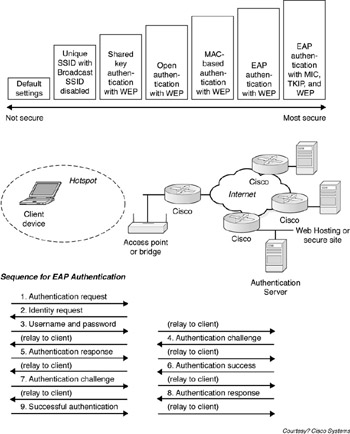Conclusion
|
|
This chapter identifies the various standardization efforts that are either under way or have just completed in support of WLANs, WPANs, and WWANs. It is important to note, however, that at the time of this writing (and in the foreseeable future) the commercial emphasis is squarely in favor of IEEE 802.11b technology.
IEEE 802.11b works well for corporate WLAN applications in indoor environments where external interference is at a minimum. This is because the enterprise user controls who is in the building or on the floor (namely, who can deploy other antennas), and the walls attenuate potential interference from the outside. Hotspot services in confined environments (for example, airports) also work well on IEEE 802.11b technology. Hotspot services for outdoor environments (for example, malls, stadiums, and so on) have to deal with the issue of potential interference from other ISM sources.
One other issue of consideration is the overhead added by the use of very tight security. IEEE 802.11b has experienced three overlays of security: WEP, dynamic WEP, and IEEE 802.11x (EAP) and 802.11i overlays. These build on one another, so that there is not a totally cohesive apparatus; instead, it forms an incrustation of protocols. Several levels of security can be implemented, as shown in Figure 2-5 (from Cisco sources, describing their Lightweight EAP [LEAP]). The use of the tightest form of security can make a hotspot service more difficult to sustain because near-constant reauthentication occurs for users who have mid to low levels of signal. While this handshake with the authentication server is occurring, the user is locked out of the service, although this is all supposed to be automatic and transparent to the user. For Internet-access services, a mid-range security discipline (such as MAC-based authentication with WEP) should be adequate.

Figure 2-5: Levels of security in practical implementations of IEEE 802.11b technology (Source: Cisco Systems)
In summary, in spite of some ultimate limitations hinted at previously, IEEE 802.11b remains the leading hotspot technology for the foreseeable future.
|
|
EAN: N/A
Pages: 88